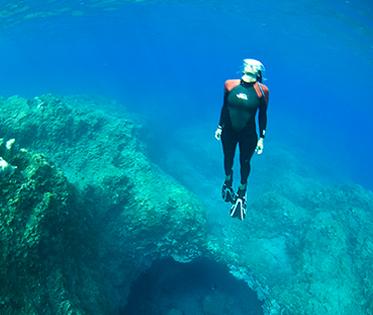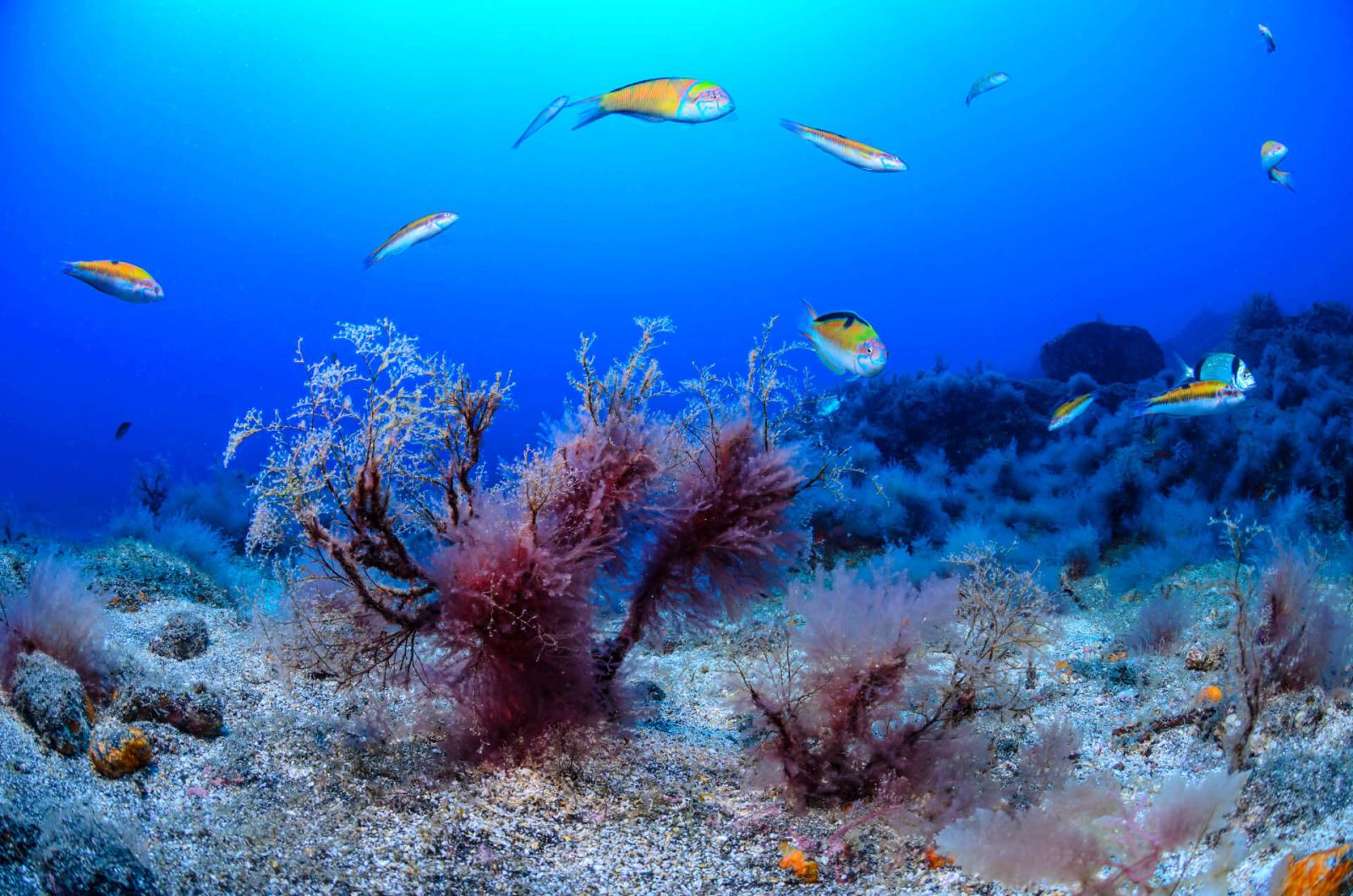The Canary Islands are a Garden of Eden for diving enthusiasts, an activity that they can do almost any day of the year in the archipelago’s clean, transparent waters with visibility of up to 30 metres. The temperatures favour the islands being a world-class paradise for marine diversity: volcanic seabed, reefs and grottos where an incredible wealth of species of marine fauna live.


Marine reserves in the Canary Islands
In the Canary Islands, you can find up to three marine reserves and enjoy their rich, diverse fauna.
The Punta de La Restinga-Mar de las Calmas Marine Reserve on the island of El Hierro holds huge appeal for any serious diver. An astounding seabed where turtles, tuna, great amberjacks, rays, wrecker and dolphins live, letting themselves be seen as they swim between the caves and cliffs. A rich seabed that was regenerated after the underwater eruptions in 2011.
Diving in the La Palma Marine Reserve, with lots of grottos and cliffs stretching down as far as 300 metres, is a real challenge for divers looking for deep dives and perfect for viewing good specimens of eagle rays, black coral or common bottlenose dolphins.
The marine reserve around the island of La Graciosa and the islets to the north of Lanzarote is the largest protected marine area in all of Europe. Its spectacular seabed hides a great diversity of its marine fauna, which can be enjoyed from different dive points suitable for all levels. There are many specimens of hake, European bass and common dentex, highly valued by fishing enthusiasts.



Volcanic seabed and underwater mysteries
Under the sea in the Canary Islands, there are lots of places to enjoy diving, where you can clearly see the islands’ volcanic nature. Not far from the coast, you can also visit caves and the seabed down to a depth of 1,000 metres, full of black lava structures and underwater grottos.
There are lots of stories hidden in the waters surrounding the islands. During dives, it is not unusual to discover shipwrecks that are excellently preserved despite the passage of time. Thanks to their position as a port of call on commercial and maritime routes and their significant fishing activity throughout history, the Canary Islands hide a seabed full of life and brimming with species in the depths surrounding them. And we mustn’t forget to mention another secret below the surface of the ocean: the striking Atlantic Museum, near Playa Blanca. The only underwater sculpture museum in Europe.

Dives for all levels and championships
The range of places where one can go diving in the Canary Islands is very complete: an ocean of contrasts, different depths and spots for all degrees of difficulty. In addition, many locations are easy to access on foot from the coast, with no need for sailing. The islands also have professionals and numerous dive schools which offer materials, accompaniment and training: from a first dive to courses to become a diving instructor. A variety of personalised experiences adapted to each person and level.
The archipelago also hosts some world-famous sporting events and competitions, like the renowned Open Fotosub Isla de El Hierro, an underwater photography competition that is held every year and which attracts professionals and amateurs from different countries.






